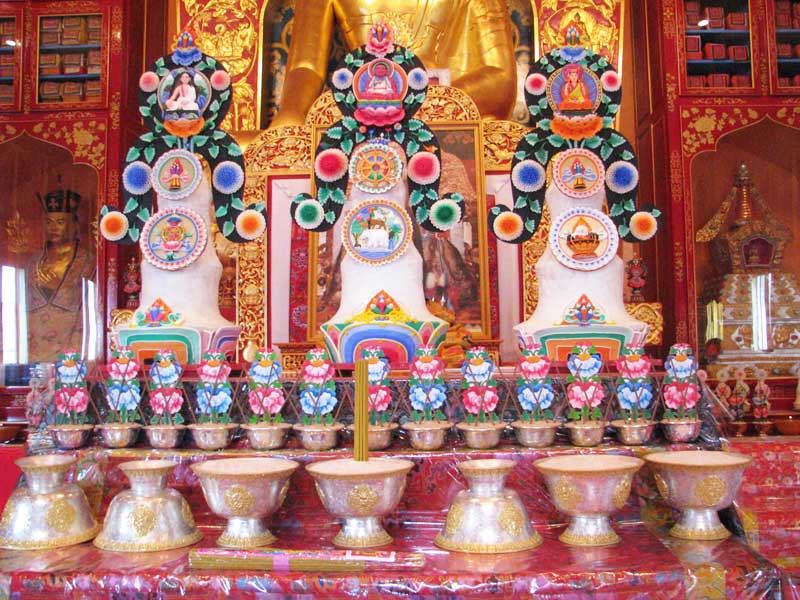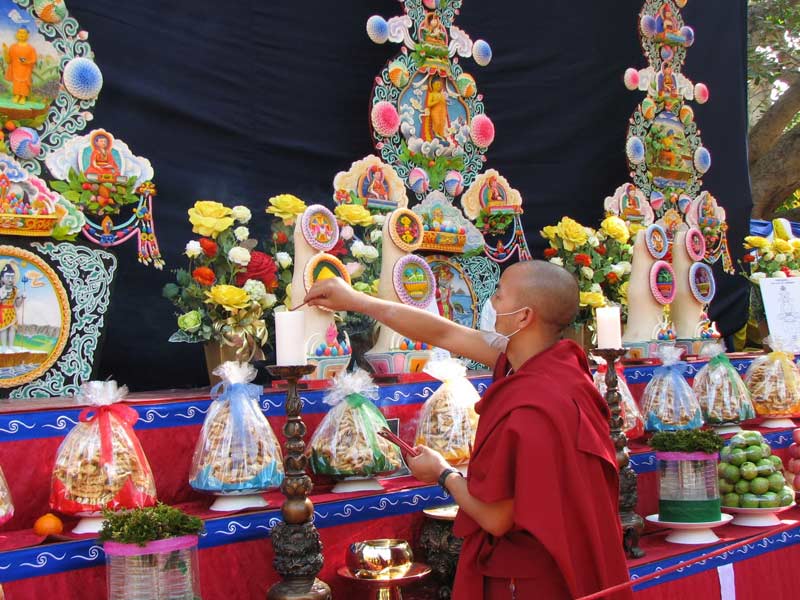.
Η γλυπτική με βούτυρο, λέγεται ότι είναι μια αρχαία παράδοση των βουδιστών του Θιβέτ. Χρησιμοποιούσαν βούτυρο και διάφορες βαφές, προκειμένου να δημιουργήσουν διάφορα γλυπτά με μικρή διάρκεια ζωής, με αφορμή το Νέο Έτος αλλά και άλλων θρησκευτικών κυρίως εορτασμών.
Ακόμα και ο Βρετανός μουσικός θρύλος David Bowie έκανε μια αναφορά για την γλυπτική με βούτυρο του Θιβέτ στο τραγούδι του «Silly Boy Blue» το 1967.
There are many things in Tibet that most parts of the world find strange and intriguing. Probably one of the strangest, yet most beautiful, things to come out of this remote region of China is the Tibetan Butter Sculptures.
What are Butter Sculptures
Made from Tibetan Dri butter – the dri is the female yak – they are sacred offerings, molded by hand and decorated in the most colorful ways imaginable. In a variety of sizes – from a few centimeters to several meters – these delicately ornate sculptures are often displayed in monasteries and temples throughout Tibet.
Butter has always been highly valued in Tibetan culture, and its malleable qualities and availability make it the ideal medium for sculptures. Making them requires a great deal of skill gleaned through years of practice. It is a unique art that has been handed down through the centuries.
History of Butter Sculpture
Butter sculpture started in Tibet in the Ming Dynasty, around 1409 AD. The exact origin of butter sculpture, also known as “Tsepdro” or “Torma”, is shrouded in myth.
There are two current versions of how it began. In the first, it is believed that when Princess Wenchang brought the statue of the young Sakyamuni to Tibet, and the monks wanted to present them with flowers. However, in the cold, winter landscape, no flowers could be found, so one of the monks carved the flowers out of frozen butter.
The other version tells of how Tsongkhapa won in a grand religious debate, and dreamed of withering plants that turned into flowers and thorns that turned into lamps with countless diamonds shining in their depths. After he woke he started the lamas working on a visualization of his dream, and the pavilions, flowers and jewels created by the monks amazed all who saw it.
The practice of the creation of the dream has since become the butter sculpting. But whichever is the true version, or the real origin, the tradition has followed for centuries, and still endures today, where the traditional torma are still made from dri butter in beautiful and colorful sculptures.









Fascinating. I believe they also have a drink made of rancid butter. Interesting that you now term Tibet a ‘remote region of China’. I remember when China annexed the country and the Dalai Lama fled
LikeLiked by 1 person
Yesterday i saw this film … it was fantastic !!
LikeLiked by 1 person
I’m sure it is. I read the book in the early 1950s – that’s where I learned about the drink
LikeLiked by 1 person
I have never heard about butter sculpture, but if there is a sand sculpture, ice sculpture, fruit….why not a butter:))
LikeLiked by 2 people
Good morning Beata ❤
"The Art That Melts The Hearts Of The Masses" lol!!!!
LikeLiked by 2 people
Good morning, kisses!!
Art is pretty strange power:)
LikeLiked by 2 people
Couldn’t agree more ❤ ❤
LikeLiked by 2 people